If you’re looking for the best aroma and numbing sensation from Sichuan pepper, grind your own powder! It’s quick, easy and tastes so much better.
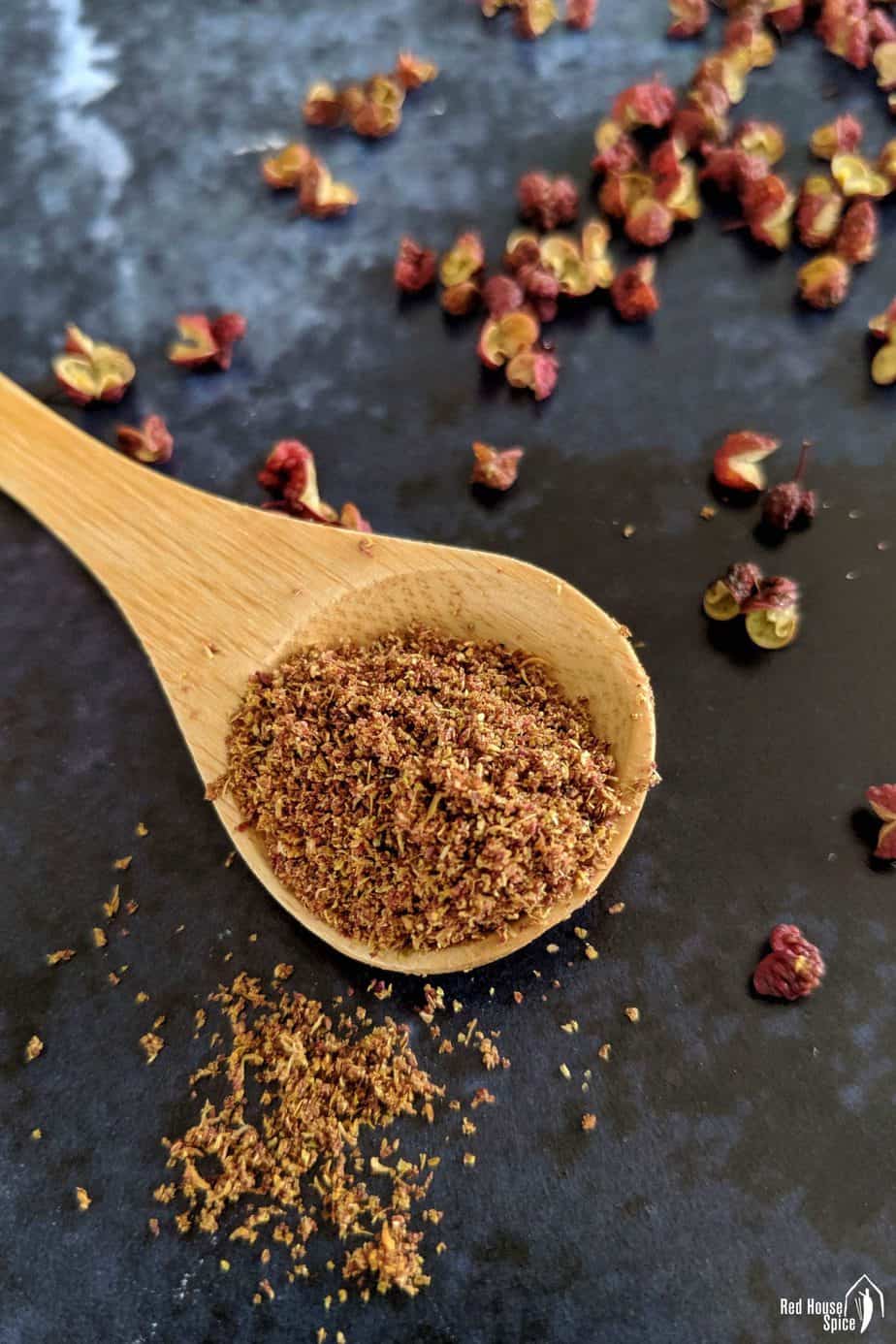
Sichuan pepper (Huā Jiāo, 花椒, aka Szechuan pepper or Chinese pepper) is one of the most important spices used in the Chinese kitchen. It has a powerful aroma and creates a unique numbing sensation in your mouth. Apart from being used as whole for stir-fries, braised dishes & hot pot, ground Sichuan pepper plays an important role in seasoning Chinese delicacies.
The fresher the better
For optimal taste, it’s always best to use freshly ground Sichuan pepper, particularly when you prepare “Málà/麻辣” dishes that demand a strong numbing effect. Shop-bought Sichuan pepper powder may seem convenient but the flavour is often compromised. I routinely grind my own powder as it’s quick, easy and tastes so much better.
A common mistake
Before we get into the recipe, let me talk about a common mistake people make when it comes to grinding Sichuan peppercorns. One of my friends once complained: “My ground Sichuan pepper tastes like sand. So gritty!” Later I found out that she put Sichuan peppercorns straight into her regular pepper mill to grind over her food. “You shouldn’t have treated it as black pepper.” I said.
Although sharing the word “pepper” in their names, Sichuan pepper is different from black pepper in every way. They are not botanically related. They don’t taste similar. Also, they need to be ground in different ways. The method my friend used doesn’t bring out the best flavour and results in a gritty, sandy texture which could ruin a delicious dish.
Follow 4 steps to grind Sichuan pepper
Now let me explain how to grind it properly. It only takes a few minutes to make your own Sichuan pepper powder. But make sure you follow all the steps.
Step 1: Discard the black seeds
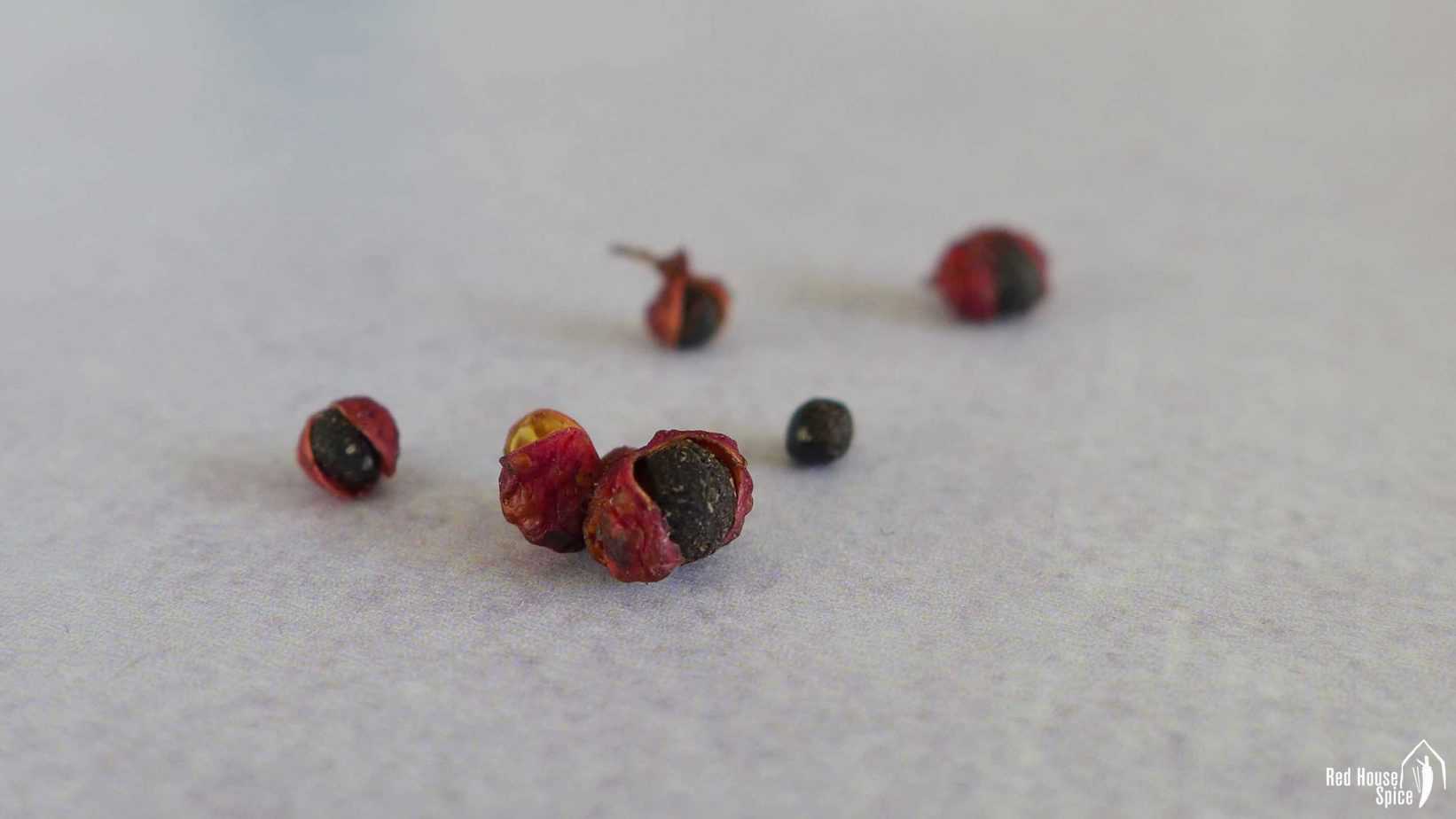
Before you start grinding, make sure you look through the peppercorns and discard any black seeds that you find.
Unlike black/white pepper, only the open husks of Sichuan pepper is used in food. The black seeds (found loose in the package or still inside the husks) are hard and tasteless thus need to be removed. You wouldn’t find many of them when purchasing good quality Sichuan pepper. It could be an issue with poor quality ones.
Step 2: Dry roast without oil
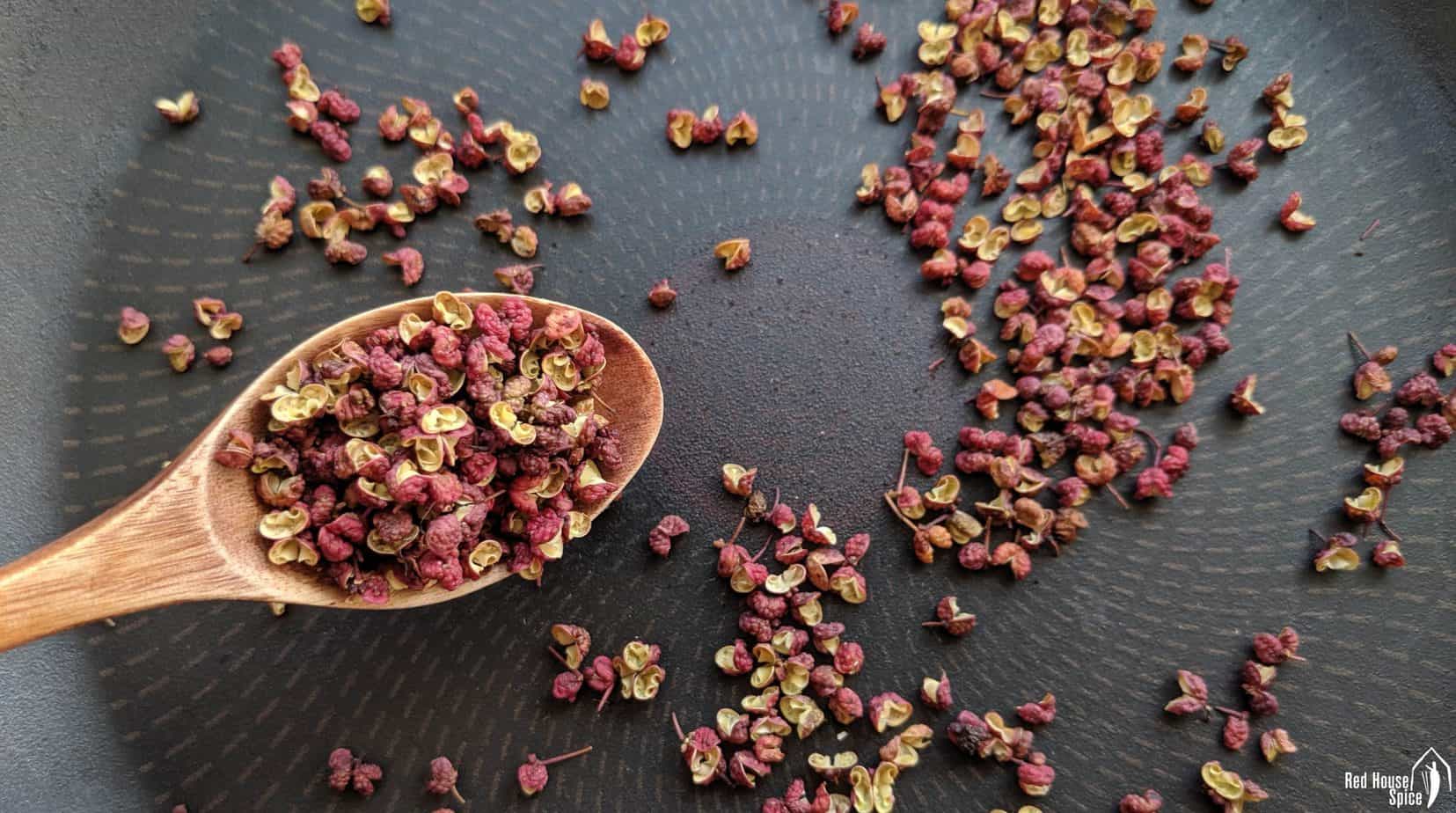
Place Sichuan peppercorns in a cold frying pan. Roast over medium-low heat. Shake the pan back and forward occasionally. Look out for the signs of readiness:
- They start to release the aroma.
- They look a little oily on the surface
Remove them from the hot pan immediately. Overcooking will result in a bitter taste.
Step 3: Let cool then crush
Leave the roasted peppercorns to cool before you grind them. I use my mortar and pestle to do the job. After the roasting and cooling process, the peppercorns become brittle thus very easy to grind. You may also use an electric grinder if you wish.
Step 4: Sift to remove gritty bits
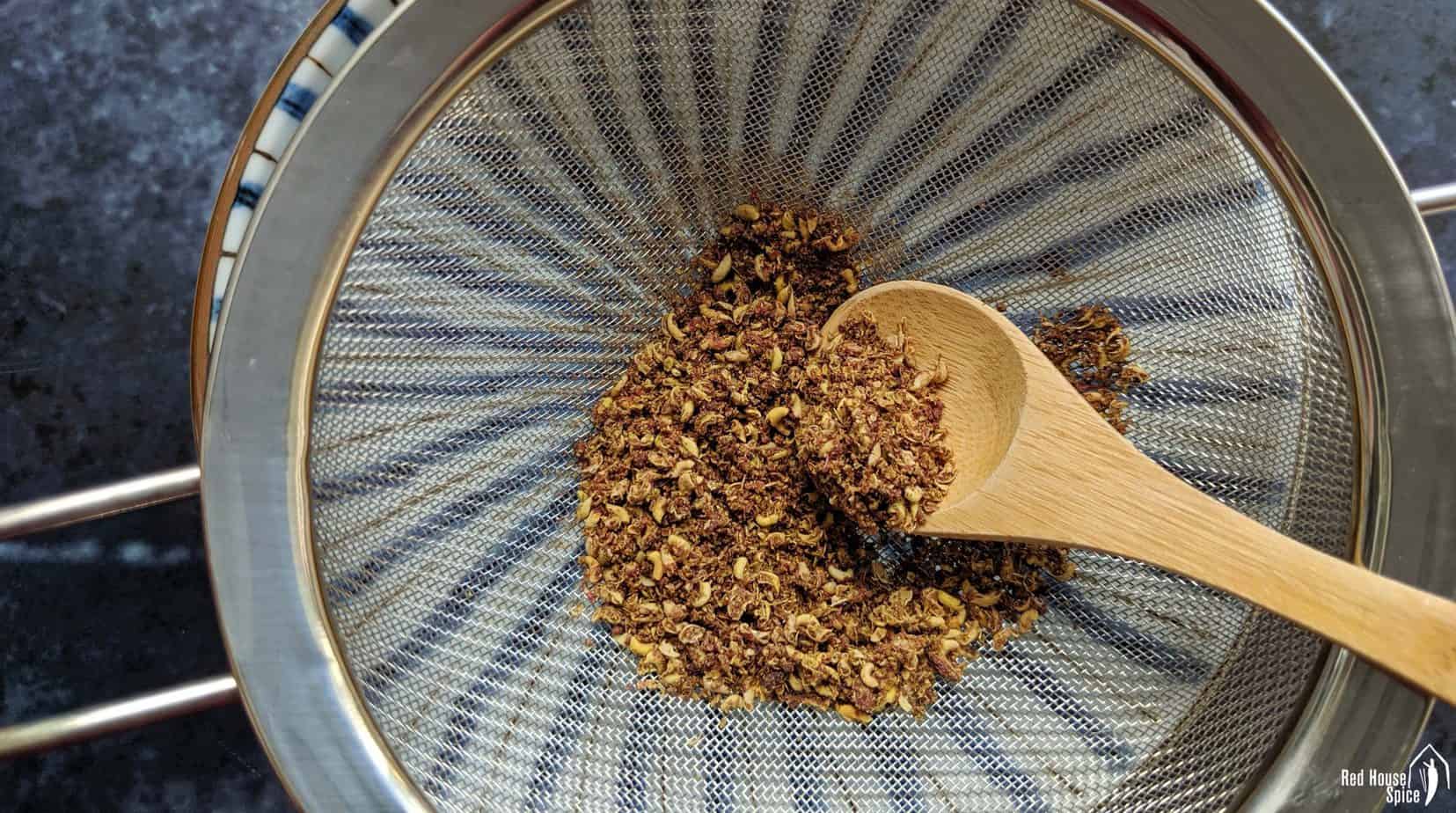
Finally, you need to sift the crushed pepper through a fine-mesh sieve. This is to remove the gritty, sandy bits (from the black seeds and/or the yellow inner parts of the husks). I strongly advise you not to skip this step.
Make a small batch at a time
Sichuan pepper’s aroma and numbing effect decrease over time. Particularly after grinding, it loses its best taste pretty quickly. I suggest you only grind a small amount at a time.
Keep freshly ground Sichuan pepper in airtight containers away from heat & direct sunlight. Use it within two weeks for optimal taste.
Many delicious ways to use it
There are many ways to enjoy the unique taste of ground Sichuan pepper. Here is a list of examples:
- Mix it into the aromatic dressing for Mouth-Watering Chicken, Bang Bang Chicken
- Sprinkle it over the addictive Mapo Tofu
- Add it to the irresistible Chongqing Noodles & Dan Dan Noodles
- Brush it over the dough for comforting Scallion Pancakes
- Stir in the delicious Dumpling Fillings
Want to learn more about Sichuan pepper?
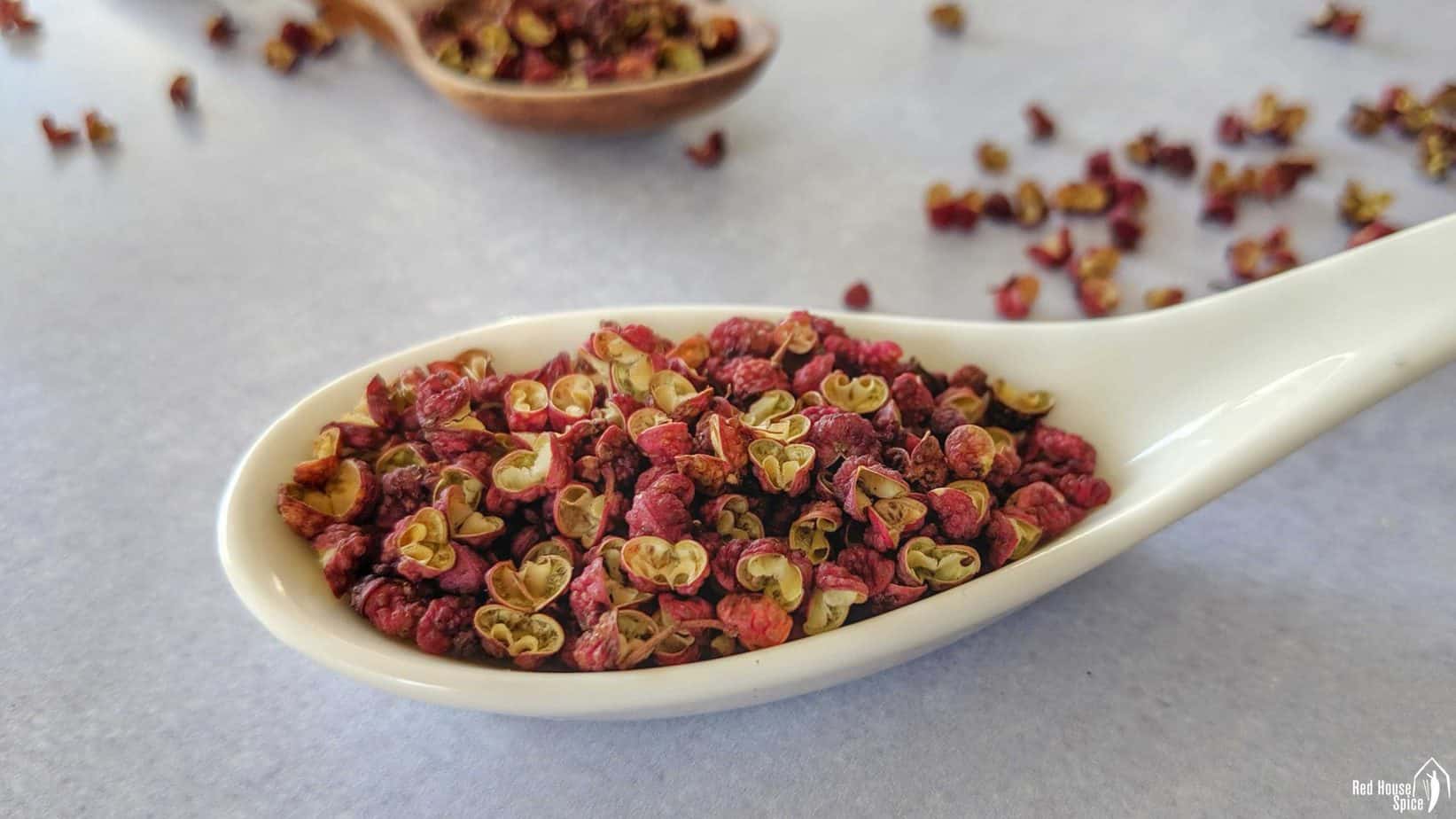
I guess some of you might like to know more about this unique Chinese spice. If this is the case, please check out my Complete Guide to Sichuan Pepper which includes answers to over 20 FAQs. Also, you are always welcome to add your questions to the list. I’m very happy to help!
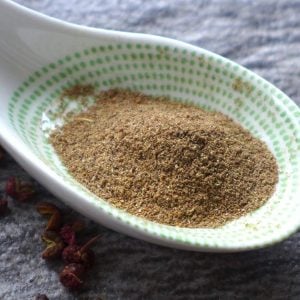
How to grind Sichuan peppercorn
Ingredients
- Whole Sichuan peppercorns
Instructions
- Look through the peppercorns. Discard all the black seeds.
- Toast the peppercorns on low heat until they are fragrant.
- Transfer to a mortar or a spice grinder. Grind when they are completely cool.
- Sift with a sieve. Use the fine powder for recipes.
NUTRITION DISCLOSURE: Nutritional information on this website is provided as a courtesy to readers. It should be considered estimates. Please use your own brand nutritional values or your preferred nutrition calculator to double check against our estimates.


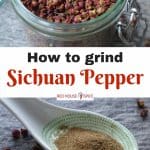
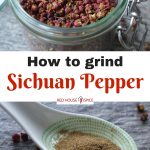
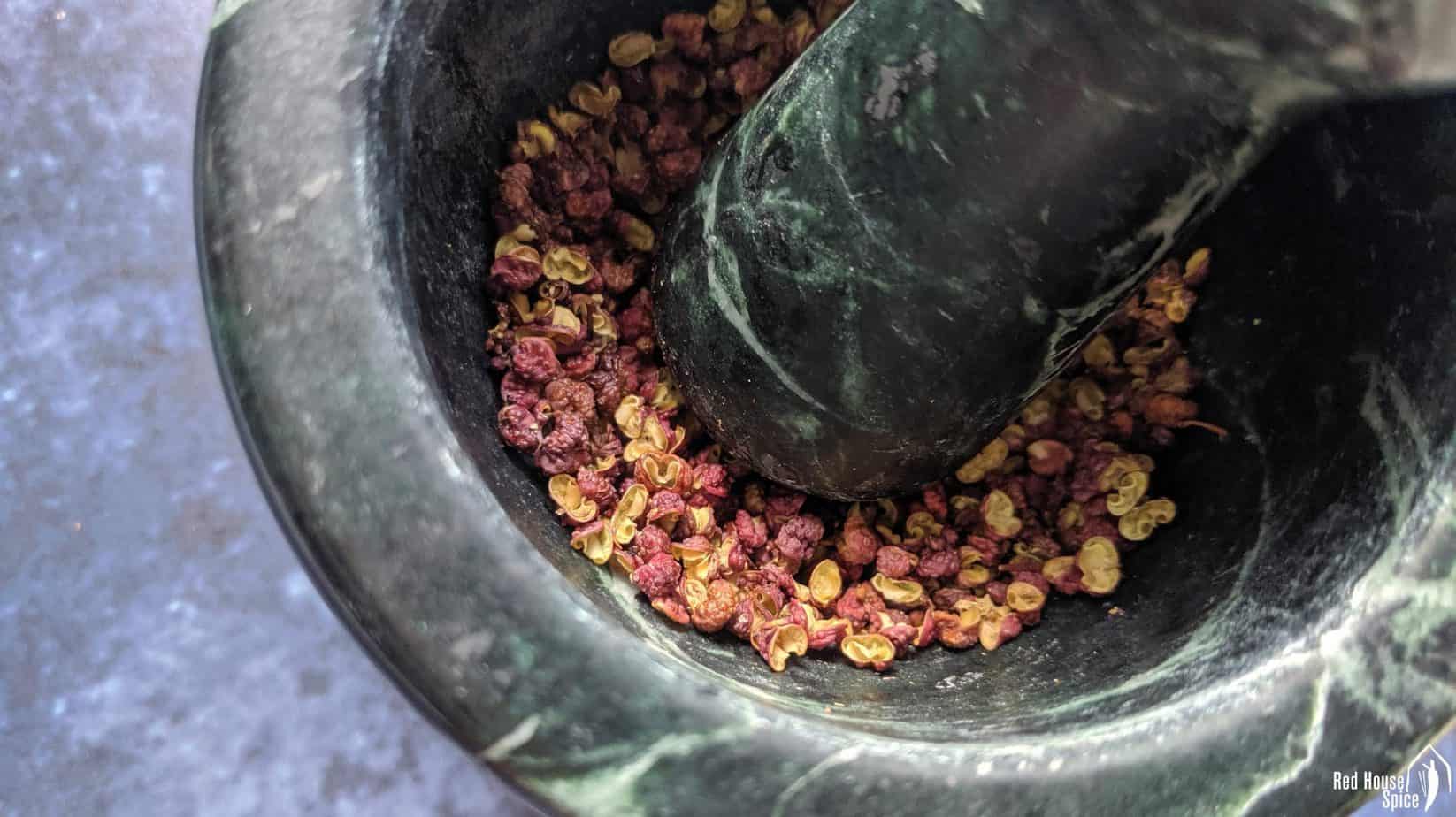
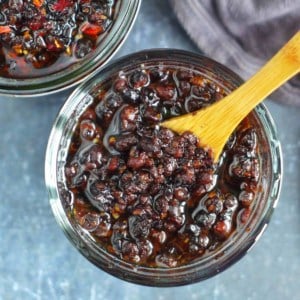
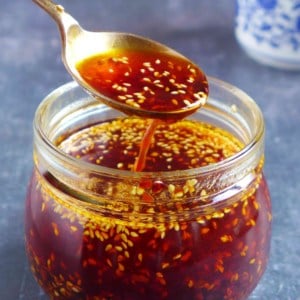
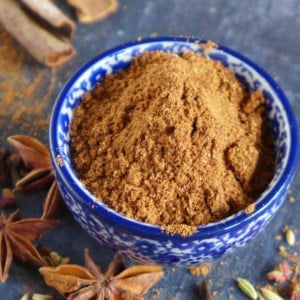
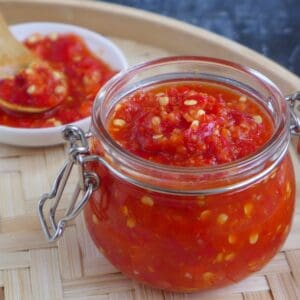
I purchased some peppercorns and am going to try and grind them myself. I see that you recommend sifting the ground peppercorns before using them. When I go online and look for a sieve, they seem to have only one size that is not specifically named. Is there a specific size of sieve or will something called fine or extra fine good enough?
Hi Dennis! It’s better to use a fine-mesh sieve for the job (no need to be extra fine though). Happy cooking!
Do you have a sense of conversion for recipe purposes of how much in amounts of whole peppercorns translates to how much ground? Thank you!
Hi Liari! I don’t believe there’s a universal conversion from whole Sichuan peppercorns to ground Sichuan pepper due to variables like the dish itself and the method of pepper application. It’s important to note that ground pepper tends to have a more intense flavor, especially when it’s freshly ground. However, it’s not suitable for infusing hot oil in the same way whole peppercorns do. Furthermore, substituting ground for whole Sichuan peppercorns may not work in recipes where the powder is sprinkled on the dish at the end without further cooking.
The best approach is to experiment and taste as you go to find the right balance for your dish.
As a point of reference, how long would YOU toast the peppers in a stainless steel pan over low heat (starting with a cold pan)? 5 minutes, 10 minutes?
Thank you
To answer your question, I did a test with 1/4 cup (15g) of Sichuan peppercorns. It took me 5 minutes to toast them over very low heat in a stainless pot with a heavy bottom. To spot when they’re ready, take a close look at the peppercorns. You’ll notice they become oily or shiny in some spots. Hope this helps!
Thanks. Looking online both fine mesh and extra fine mesh are both 30 mesh. Not really that fine. I’ll order one and then we will know. :>)
If I add to Kung Pao recipe for 4 people, how much should I use?
I’d use ½ tsp of ground Sichuan pepper. Since you add it at the very end of the cooking process, you can always give it a taste and adjust. Happy cooking!
This is such an honorable treatment of this spice. I’ve had some for a time but never knew about the roasting and sifting parts – I’d simply ground in a mortar to use. Wish you could still be an investigative reporter as that was my kind of hero growing up (and still) but I also understand how risky that can be anywhere these days. Today I get my news on china from a couple white guys that spent a decade in the country the yt channel “The China Show” – best show in the world actually! My Dad worked “over the wall” for years as did my best friend, and he married a woman from Singapore, ethnically chinese.
Hi, Good afternoon frim hete in Hk. I just want to ask, Can I use food grinding processor for quick task, If i do so, I’m scared it will affect the taste?
Yes, you can. Just make sure you follow the instructions: toast them beforehand and sift after grinding.
Can I put them in a food processor or is that a bad idea?
It’s fine to use a food processor to grind. Don’t forget to sift it afterwards and discard the gritty, sandy bits.